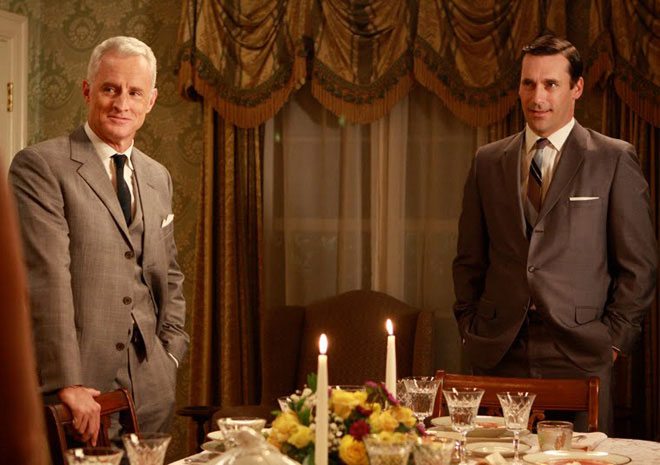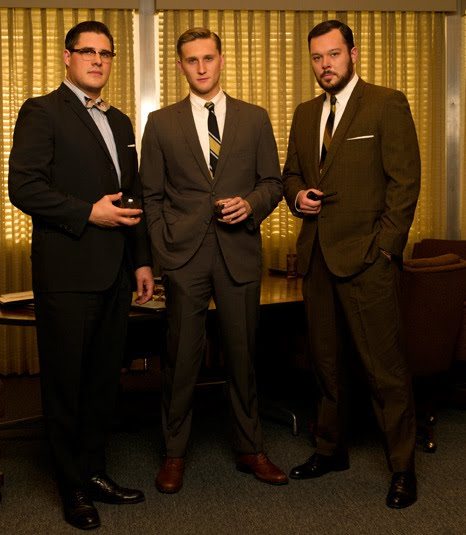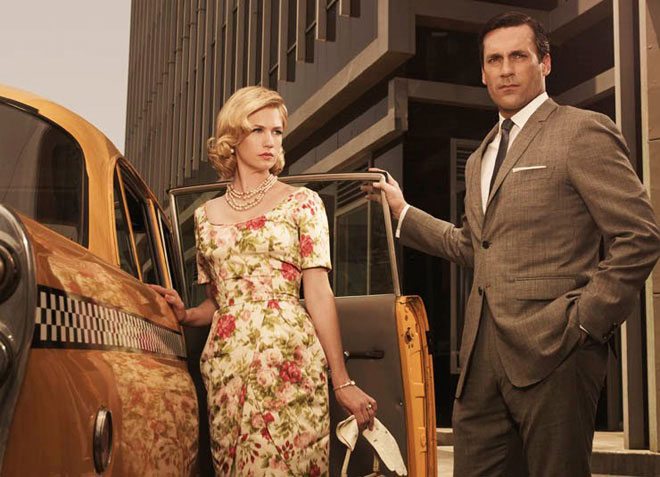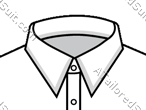Good trousers are never the defining characteristic of a man's outfit, unless you're a circus clown. A well-chosen outfit should direct attention toward the face and help it stand out in the viewer's mind, and drawing the eye below the waist does nothing to further that goal. Instead, trousers should present as smooth and unbroken a path as possible up the wearer's body; the best trousers will be able to retain their sleek profile whether the wearer is moving or stationary; seated or standing.
On a more practical note, of course,
trousers are also where men tend to carry the little necessities of
life -- their keys, wallet, cell phone, and so on. Good trousers will
have pockets of the proper size and shape to carry a few small items
without bulging; loading the pockets and checking a mirror can be an
excellent test for off-the-rack trousers. Custom-made trousers can
simply be fitted with all the usual daily items in the pockets to see if
any adjustments are needed.
Modern dressers should remember that the
"fall" of dress trousers -- the distance from the waist to the crotch --
is longer than that of casual jeans, meaning that the pants should be
worn higher on the body. Contemporary jeans are often fitted to be worn
at the hips, while dress pants should rest comfortably above the hips.
A well-fitted pair of dress pants should never be able to slide off the
body on its own, even without a belt or suspenders. Trousers are often
tailored for wear with suspenders rather than belts, in which case the
fall will be even longer and the fit slightly looser. This allows the
pants to "hang" on the man's body, which presents a very smooth and flat
drape. Many fine dressers prefer suspenders to belts, and often wear
trousers with no belt loops at all.
When in doubt, wear a pair of pants
with no belt or suspenders and examine the fit. If the trousers pinch
or are slipping off, the fit is incorrect. If excess fabric is
billowing or "ballooning" anywhere, or if the crotch sags loosely, the
trousers are too loose; if wrinkles and bunching appear in the fabric
when you move they are too tight. And, of course, if moving or sitting
in a pair of trousers is uncomfortable for any reason, you should be
asking yourself if you really want to spend an entire day wearing them.
More Info:

 Point Collar-
The point collar is the most common collar style, where the collar is
cut so that the "points" are reasonably close together, sometimes to the
extent that they almost hide the top portion of a tie. Longer, more
closely set points tend to draw the eye down towards the tie and away
from the face, while a more moderate cut frames the tie and completes
the arrow effect pointing at the face.
Point Collar-
The point collar is the most common collar style, where the collar is
cut so that the "points" are reasonably close together, sometimes to the
extent that they almost hide the top portion of a tie. Longer, more
closely set points tend to draw the eye down towards the tie and away
from the face, while a more moderate cut frames the tie and completes
the arrow effect pointing at the face. Cutaway or Spread Collar
- The second popular style is the cutaway, or spread collar. These
collars have the points "cut away" or spread – thus the name – revealing
more of the upper shirt area and leaving additional room for larger
knots such as the Windsor. Like the point, spread collars come in a
variety of widths, with more moderate ones resembling slightly flared
point collars, while more extreme versions can be nearly horizontal. The
particular dimensions are best left to the wearer's preference and body
type, with very wide spreads tending to accentuate wider figures while
creating a more fully proportioned look on thin gentlemen.
Cutaway or Spread Collar
- The second popular style is the cutaway, or spread collar. These
collars have the points "cut away" or spread – thus the name – revealing
more of the upper shirt area and leaving additional room for larger
knots such as the Windsor. Like the point, spread collars come in a
variety of widths, with more moderate ones resembling slightly flared
point collars, while more extreme versions can be nearly horizontal. The
particular dimensions are best left to the wearer's preference and body
type, with very wide spreads tending to accentuate wider figures while
creating a more fully proportioned look on thin gentlemen.  Button Down Collars - The button-down collar
style is most often seen on more casual shirts. These collars have
small buttonholes at the very tip of each point, corresponding to a
small button on each side of the shirtfront. While this collar can be
worn successfully with a tie, it is the least formal of all the collar
choices and is an excellent choice for the man looking to leave the tie
behind. The buttons on the collar, however, are always fastened; to
appear with undone collar buttons would be a faux pas.
Button Down Collars - The button-down collar
style is most often seen on more casual shirts. These collars have
small buttonholes at the very tip of each point, corresponding to a
small button on each side of the shirtfront. While this collar can be
worn successfully with a tie, it is the least formal of all the collar
choices and is an excellent choice for the man looking to leave the tie
behind. The buttons on the collar, however, are always fastened; to
appear with undone collar buttons would be a faux pas.  Pin and Tab Collars
- It is also worth mentioning two lesser known collars, which although
neglected by many ready made shirt manufactures, are none the less still
popular with dandies in the know. The first is the Pin collar: this
collar has small holes in each point, allowing the insertion of a
decorative pin or bar behind the tie knot, which thrusts the tie knot
forward and up while adding extra decoration to the collar itself. The
second, the Tab collar, employs a small tab extending from the middle of
each point, which is fixed together – usually with a hook-and-loop
closure – behind the tie. Like the pin collar,
this forces the tie forward and up, creating the "standing" look of
more elaborate knots. Neither the pin or tab collar should be worn
without a tie; the empty holes and flapping tabs present an untidy
appearance.
Pin and Tab Collars
- It is also worth mentioning two lesser known collars, which although
neglected by many ready made shirt manufactures, are none the less still
popular with dandies in the know. The first is the Pin collar: this
collar has small holes in each point, allowing the insertion of a
decorative pin or bar behind the tie knot, which thrusts the tie knot
forward and up while adding extra decoration to the collar itself. The
second, the Tab collar, employs a small tab extending from the middle of
each point, which is fixed together – usually with a hook-and-loop
closure – behind the tie. Like the pin collar,
this forces the tie forward and up, creating the "standing" look of
more elaborate knots. Neither the pin or tab collar should be worn
without a tie; the empty holes and flapping tabs present an untidy
appearance. Wing Collars
Wing Collars


